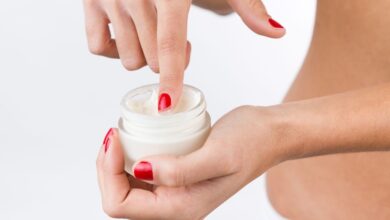Tips for Taking Care of Ingrown Nails

It occurs when the nail plate is buried in the sides of the skin of the toe, generating pain, redness, and in some cases, even infection.
This condition can result from many factors; among the leading causes, they highlight an inadequate cut of the nail, a too narrow joint of footwear, or a lousy election in the footwear sizing. This additional pressure on the toe causes the skin along the edge of a toenail to become infected and red. Any toenail can become ingrown, but usually, the big toe is the most affected.
Another prevalent cause is when toenails are not trimmed properly, when they are too short, or when the edges are rounded instead of cut straight across. Physical disability, poor eyesight, or thick nails are some of the main reasons people might trim their nails incorrectly. Besides, people who pick or tear the corners of their nails have a greater chance of developing an ingrown nail.
On the other hand, some people are predisposed to suffer from this condition by being born with curved nails that tend to grow downwards or have toenails too large for their toes. Finally, crushing the toe or other similar injuries can also cause the nail to become ingrown.
The main symptoms are redness, pain, and swelling. Many Ingrown toenails Dallas patients often report pain even with the rubbing of the sheets.
The best prevention of this condition is a nail cut in the correct shape without rounding the corners. Also, shoes with rounded tips and space in the front area do not put excessive pressure on the toes.
An Ingrown toenails Dallas specialist will quickly diagnose this condition by distinguishing the signs of redness, swelling, and extreme sensitivity to touch with the naked eye. You will see that the skin along the nail’s edge will appear to be growing over the nail or the nail underneath the skin on examining the foot. In advanced cases, infection and a small amount of pus may occur. Tests and x-rays are usually not necessary.
In the case that the person who presents an ingrown nail has diabetes, damage to nerves in the leg or foot, poor circulation of the foot, or an infection around a nail, the specialists recommend that he or she does not try to treat the problem at home and that he or she goes to a doctor as soon as possible.
The primary treatment that the podiatrist will carry out will be a clean-cut of the nails, and in severe cases or of repetition of the ailment, the advisable thing will be to carry out a light surgery of the nail removing definitively a small portion that will leave the narrower lamina, thus avoiding that it is nailed again.
If the person presents a mild case of an ingrown nail and has no possibility of going to the doctor, may temporarily relieve the symptoms by doing the following:
- Soak the foot in hot water three to four times, keeping the foot completely dry for the rest of the day.
- Gently massage the swollen skin.
- Place a small piece of cotton or dental floss under the nail and wet the cotton with water or antiseptic.
If it is the first time, the person can try to trim the nail slightly. To do this, first briefly soak the foot in hot water to soften it and make sure to cut it with a clean, sharp nail clipper. Being careful not to round or trim the corners too much; you will have to try to cut straight across the tip. Experts advise against touching the buried part of the nail. If the ingrown nail gets worse, the patient will have to see a podiatrist or dermatologist.
A specialized chiropodist should be consulted if you cannot cut the nail if you have extreme pain with redness and inflammation or fever, and more when dealing with diabetic patients. If you have diabetes and you detect an ingrown nail, you should immediately see a specialist chiropodist.





